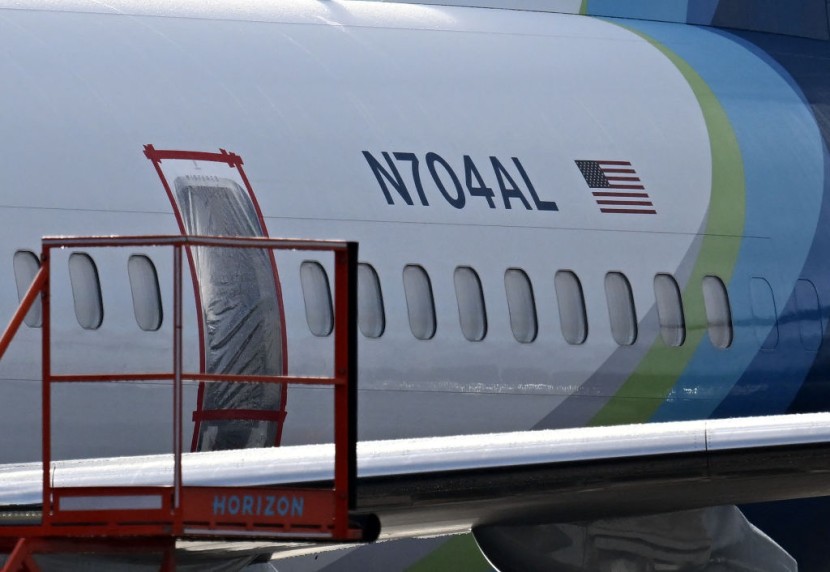A preliminary report from the National Transportation Safety Board (NTSB) has revealed startling details regarding the mid-flight door plug blowout incident that occurred on an Alaska Airlines Boeing 737 Max 9 jet on January 5, 2024.
The NTSB's investigative report, released on Tuesday, disclosed that four bolts designed to secure the door plug of the Boeing plane were absent before the plug explosively blew off mid-flight.

The incident, which led to rapid depressurization and an emergency landing back at Portland International Airport, has sparked renewed concerns about safety and quality control within Boeing and its supply chain.
Records reviewed by the NTSB indicated that damaged rivets on the edge frame forward of the plug were replaced by Spirit AeroSystems employees at Boeing's Renton, Washington factory on September 19, 2023.
However, photo documentation obtained from Boeing revealed that the plug was closed with no bolts in three visible locations, indicating a critical oversight in the assembly process.
Boeing CEO Dave Calhoun emphasized the company's accountability, stating "An event like this must not happen on an airplane that leaves our factory. We simply must do better for our customers and their passengers."
In response to the incident, the United States Federal Aviation Administration (FAA) grounded 171 Boeing 737 Max 9 planes for inspections, affecting carriers like United Airlines and Alaska Airlines. While most of these planes have since been cleared to return to service, the incident has amplified scrutiny over Boeing's production practices.
"I certainly agree that the current system is not working, because it's not delivering safe aircraft," FAA Administrator Mike Whitaker said. "So we have to make changes to that."
The FAA issued an extraordinary directive, prohibiting Boeing from raising its production rate of 737 Max aircraft beyond 38 jets per month. This measure will remain in place until the FAA is assured that Boeing's quality control procedures have been enhanced to meet safety standards.
Senators Call for Increased Accountability
The report raised questions about the documentation and oversight surrounding the installation of the bolts, with Senator Tammy Duckworth expressing concerns about the lack of paperwork regarding maintenance and inspection procedures.
"It is a series of problems," the lawmaker said in an interview. "What is going on between the maintenance and inspection teams... Holy cow - nobody noticed?"
Boeing and Spirit AeroSystems have committed to addressing the issues highlighted in the NTSB report. Boeing stated that it would review the findings expeditiously and implement measures to strengthen quality control, including enhanced inspections throughout the supply chain.
Spirit AeroSystems emphasized its dedication to safety and quality, pledging to work closely with Boeing and regulators to ensure continuous improvement.
In response to heightened oversight, the FAA has deployed inspectors to Boeing's Washington facilities and the Spirit AeroSystems factory in Kansas.
Whitaker underscored the need for rigorous monitoring and inspection, stating, "Going forward, we will have more boots on the ground closely scrutinizing and monitoring production and manufacturing activities."
The incident has prompted lawmakers to demand further accountability and oversight. Senate Commerce Committee Chair Maria Cantwell stressed the importance of quality assurance and control in ensuring aviation safety.
"The NTSB's preliminary report on the Alaska Airlines Flight 1282 accident underscores how important quality assurance is from manufacturers and how important quality control inspections from both manufacturers and the FAA are to the safety process," Cantwell said.
As the investigation continues, Boeing faces mounting pressure to address underlying issues and rebuild public trust.
Related Article : FAA Boss Vows to Hold Boeing Accountable for Air Safety Violations








